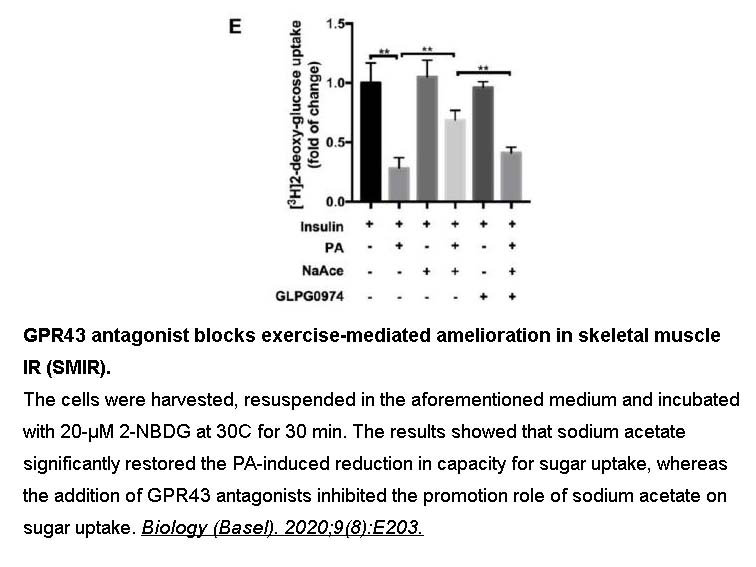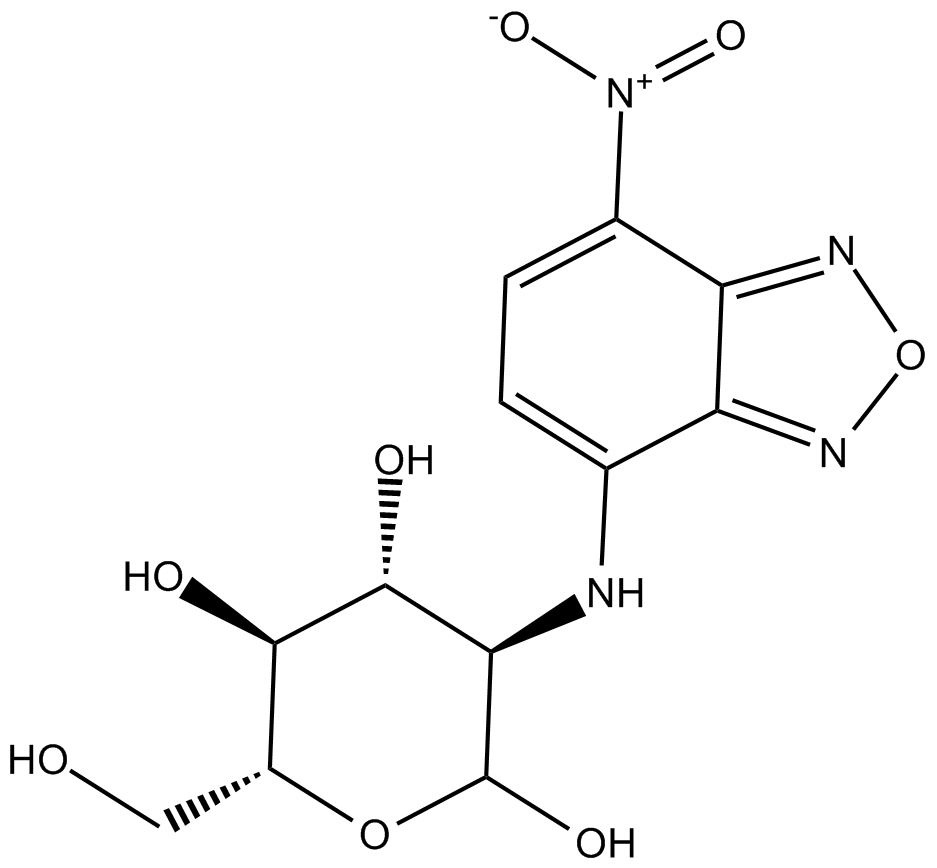2-NBDG
2-NBDG (CAS: 186689-07-6) is a fluorescently labeled derivative of 2-deoxyglucose employed as a tracer for cellular glucose uptake. Upon entering the cell via glucose transporter proteins, 2-NBDG undergoes phosphorylation by hexokinase, resulting in intracellular retention. Due to its fluorescent properties, uptake of 2-NBDG can be conveniently analyzed through methods like flow cytometry, fluorescence microscopy, or microplate assays. This compound enables the monitoring of glucose metabolism dynamics in various cell types, such as HepG2, L6 myocytes, MCF-7 cancer cells, and astrocytes, as well as in disease models including diabetes, epilepsy, hyperglycemia, and tumor xenografts.
- 1. Mengyi Shen, Leyu Zhou, et al. "Metabolic Reprogramming of CD4+ T Cells by Mesenchymal Stem Cell-Derived Extracellular Vesicles Attenuates Autoimmune Hepatitis Through Mitochondrial Protein Transfer." Int J Nanomedicine. 2024 Sep 23:19:9799-9819. PMID: 39345912
- 2. Cunqi Lv, Qingyu Zeng, et al. "Sodium Selenite Induces Autophagy and Apoptosis in Cervical Cancer Cells via Mitochondrial ROS-Activated AMPK/mTOR/FOXO3a Pathway." Antioxidants (Basel). 2024 Aug 19;13(8):1004. PMID: 39199249
- 3. Yijun Lin, Shuying Wang, et al. "Short‐Term Statin Therapy Induces Hepatic Insulin Resistance Through HNF4α/PAQR9/PPM1α Axis Regulated AKT Phosphorylation." Adv Sci (Weinh). 2024 Jul 5:e2403451. PMID: 38970167
- 4. Yuwen Luo, Jun Li, et al. "Procyanidin B2 improves developmental capacity of bovine oocytes via promoting PPARγ/UCP1‐mediated uncoupling lipid catabolism during in vitro maturation." Cell Prolif. 2024 Jun 12:e13687. PMID: 38864666
- 5. Zhe-Wei Yu, Bang-Ping Cai, et al. "Compounds from Agathis dammara exert hypoglycaemic activity by enhancing glucose uptake: lignans, terpenes and others." Nat Prod Bioprospect. 2024 Mar 22;14(1):23. PMID: 38517590
- 6. Sudipta Bar, Kenneth A Wilson, et al. "Neuronal Glycogen Breakdown Mitigates Tauopathy via Pentose Phosphate Pathway-Mediated Oxidative Stress Reduction." Res Sq. 2023 Nov 8:rs.3.rs-3526342. PMID: 37986935
- 7. Mingshu Tu, Xiaoqing Yin, et al. "NSG1 promotes glycolytic metabolism to enhance Esophageal squamous cell carcinoma EMT process by upregulating TGF-β." Cell Death Discov. 2023 Oct 23;9(1):391. PMID: 37872157
- 8. Fan Wang, Yuhang Hu, et al. "LncRNA FTO-IT1 promotes glycolysis and progression of hepatocellular carcinoma through modulating FTO-mediated N6-methyladenosine modification on GLUT1 and PKM2." J Exp Clin Cancer Res. 2023 Oct 16;42(1):267. PMID: 37840133
- 9. Shengmiao Chen, Yiran Wu, et al. "Allosterically inhibited PFKL via prostaglandin E2 withholds glucose metabolism and ovarian cancer invasiveness." Cell Rep. 2023 Oct 31;42(10):113246. PMID: 37831605
- 10. Xiaona Chen, Yi Hao, et al. "NAT10/ac4C/FOXP1 Promotes Malignant Progression and Facilitates Immunosuppression by Reprogramming Glycolytic Metabolism in Cervical Cancer." Adv Sci (Weinh). 2023 Nov;10(32):e2302705. PMID: 37818745
- 11. Hanqing Zhao, Zhenke Wen, et al. "Activated Lymphocyte-Derived DNA Drives Glucose Metabolic Adaptation for Inducing Macrophage Inflammatory Response in Systemic Lupus Erythematosus." Cells. 2023 Aug 18;12(16):2093. PMID: 37626904
- 12. Jiezhong Guan, Xi Xu, et al. "Cellular hierarchy framework based on single-cell/multi-patient sample sequencing reveals metabolic biomarkerPYGLas a therapeutic target for HNSCC." J Exp Clin Cancer Res. 2023 Jul 8;42(1):162. PMID: 37420300
- 13. Kailu Liu, Xi He, et al. "Short-chain fatty acid-butyric acid ameliorates granulosa cells inflammation through regulating METTL3-mediated N6-methyladenosine modification of FOSL2 in polycystic ovarian syndrome." Clin Epigenetics. 2023 May 13;15(1):86. PMID: 37179374
- 14. Juanjuan Cheng, Xingdong Ma, et al. "High fructose-induced skeletal muscle insulin resistance could be alleviated by berberine via AMPD1 and ADSL." Food Chem Toxicol. 2023 May:175:113731. PMID: 36931587
- 15. Xueyi Chen, Ping Liu, et al. "ETNPPL modulates hyperinsulinemia‐induced insulin resistance through the SIK1/ROS‐mediated inactivation of the PI3K/AKT signaling pathway in hepatocytes." J Cell Physiol. 2023 May;238(5):1046-1062. PMID: 36924049
- 16. Yao J, Tang S, et al. "Isoginkgetin, a potential CDK6 inhibitor, suppresses SLC2A1/GLUT1 enhancer activity to induce AMPK-ULK1-mediated cytotoxic autophagy in hepatocellular carcinoma." Autophagy, 2023, 19(4): 1221-1238. PMID: 36048765
- 17. Zuolei Jing, Qianmei Liu, et al. "NCAPD3 enhances Warburg effect through c-myc and E2F1 and promotes the occurrence and progression of colorectal cancer." J Exp Clin Cancer Res. 2022 Jun 11;41(1):198. PMID: 35689245
- 18. Zhuangzhuang Yang, Miao Yu, et al. "Retinoic acid inhibits the angiogenesis of human embryonic stem cell-derived endothelial cells by activating FBP1-mediated gluconeogenesis." Stem Cell Res Ther. 2022 Jun 7;13(1):239. PMID: 35672803
- 19. Min-Min Hu, Wen-Ya Zheng, et al. "Sesamol Reverses Myofiber-Type Conversion in Obese States via Activating the SIRT1/AMPK Signal Pathway." J Agric Food Chem. 2022 Feb 23;70(7):2253-2264 PMID: 35166533
- 20. Hongshuo Zhang, Jia Qi, et al. "O-GlcNAc modification mediates aquaporin 3 to coordinate endometrial cell glycolysis and affects embryo implantation." Journal of Advanced Research. 2022;37:119–131 doi:10.1016/j.jare.2021.06.020 1016/j.jare.2021.06.020
- 21. Jia-Bei Li, Wen-Song Xi, et al. "Effects of VO2 nanoparticles on human liver HepG2 cells: Cytotoxicity, genotoxicity, and glucose and lipid metabolism disorders." NanoImpact. 2021 Oct;24:100351. PMID: 35559810
- 22. Yan-Yang Li, Xiao-Jing Wang, et al. "Baicalein ameliorates ulcerative colitis by improving intestinal epithelial barrier via AhR/IL-22 pathway in ILC3s." FASEB J. 2021 Nov;35(11):e21998. PMID: 34669985
- 23. Xiaotong Chen, Yunshuo Zhao, et al. "Identification of novel inhibitors of GLUT1 by virtual screening and cell-based assays." Invest New Drugs. 2021 Oct;39(5):1242-1255. PMID: 33900490
- 24. Ai Guo, Kai Li, et al. "FGF19 protects skeletal muscle against obesity-induced muscle atrophy, metabolic derangement and abnormal irisin levels via the AMPK/SIRT-1/PGC-α pathway." J Cell Mol Med. 2021 Apr;25(7):3585-3600 PMID: 33751819
- 25. Ling Yang, Haiqi Lin, et al. "Exercise Ameliorates Insulin Resistance of Type 2 Diabetes through Motivating Short-Chain Fatty Acid-Mediated Skeletal Muscle Cell Autophagy." Biology 2020, 9(8), 203; 3 August 2020 PMID: 32756447
- 26. Kang Q, Hu M, et al. "Global Transcriptomic Analysis of Zebrafish Glucagon Receptor Mutant Reveals Its Regulated Metabolic Network." Int J Mol Sci. 2020;21(3):E724 PMID: 31979106
- 27. Luo P, Zhang C, et al. "Transcriptional positive cofactor 4 promotes breast cancer proliferation and metastasis through c-Myc mediated Warburg effect." Cell Commun Signal. 2019 Apr 16;17(1):36 PMID: 30992017
- 28. ZheZhanga, XiLianga, et al. "Evaluation of probiotics for improving and regulation metabolism relevant to type 2 diabetes in vitro." Journal of Functional Foods. Available online 10 November 2019, 103664
- 29. Qiang Chu, Shuang Zhang,et al. "Cherry Anthocyanins Regulate NAFLD by Promoting Autophagy Pathway." Oxidative Medicine and Cellular Longevity 10.1155/2019/4825949
- 30. Yan F, Yang Y, et al. "Effects of C-Glycosides from Apios americana Leaves against Oxidative Stress during Hyperglycemia through Regulating Mitogen-Activated Protein Kinases and Nuclear Factor Erythroid 2-Related Factor 2." J Agric Food Chem. 2017 Aug 30;65(34):7457-7466 PMID: 28758742
- 31. Yan F, Dai G, Zheng X. "Mulberry anthocyanin extract ameliorates insulin resistance by regulating PI3K/AKT pathway in HepG2 cells and db/db mice." J Nutr Biochem. 2016 Aug 4;36:68-80 PMID: 27580020
| Physical Appearance | A crystalline solid |
| Storage | Store at -20°C |
| M.Wt | 342.26 |
| Cas No. | 186689-07-6 |
| Formula | C12H14N4O8 |
| Solubility | insoluble in DMSO; ≥17.1 mg/mL in H2O with ultrasonic; ≥2.93 mg/mL in EtOH with gentle warming and ultrasonic |
| Chemical Name | (3R,4R,5S,6R)-6-(hydroxymethyl)-3-((7-nitrobenzo[c][1,2,5]oxadiazol-4-yl)amino)tetrahydro-2H-pyran-2,4,5-triol |
| SDF | Download SDF |
| Canonical SMILES | [O-][N+](c(c1n[o]nc11)ccc1N[C@H]([C@H]1O)C(O)O[C@H](CO)[C@H]1O)=O |
| Shipping Condition | Small Molecules with Blue Ice, Modified Nucleotides with Dry Ice. |
| General tips | We do not recommend long-term storage for the solution, please use it up soon. |
| Cell experiment [1,2]: | |
|
Cell lines |
HepG2 human hepatocarcinoma cells, L6 rat skeletal muscle cells, MCF-7 breast cancer epithelial cells |
|
Preparation method |
General tips for obtaining a higher concentration: Please warm the tube at 37 ℃ for 10 minutes and/or shake it in the ultrasonic bath for a while. Stock solution can be stored below -20℃ for several months. |
|
Reacting condition |
10 μM for 10 min |
|
Applications |
In HepG2 human hepatocarcinoma cells and L6 rat skeletal muscle cells, 2-NBDG concentrations higher than 0.25 mM might show a high degree of self-quenching. 2-NBDG could be used as a fluorescent indicator for direct glucose uptake measurement. In the MCF-7 breast cancer cells, 2-NBDG uptake displayed rapid uptake for the first one to five minutes, then slowed, reaching an apparent maximum uptake near 20–30 minutes. |
| Animal experiment [3]: | |
|
Animal models |
Sprague–Dawley male adult rat |
|
Dosage form |
200 mg |
|
Application |
2-NBDG can be used for localizing epileptic foci. |
|
Other notes |
Please test the solubility of all compounds indoor, and the actual solubility may slightly differ with the theoretical value. This is caused by an experimental system error and it is normal. |
|
References: [1]. Zou C, Wang Y, Shen Z. 2-NBDG as a fluorescent indicator for direct glucose uptake measurement[J]. Journal of biochemical and biophysical methods, 2005, 64(3): 207-215. [2]. O’Neil R G, Wu L, Mullani N. Uptake of a fluorescent deoxyglucose analog (2-NBDG) in tumor cells[J]. Molecular Imaging and Biology, 2005, 7(6): 388-392. [3]. Tsytsarev V, Maslov K I, Yao J, et al. In vivo imaging of epileptic activity using 2-NBDG, a fluorescent deoxyglucose analog[J]. Journal of neuroscience methods, 2012, 203(1): 136-140. |
|
Quality Control & MSDS
- View current batch:
Chemical structure
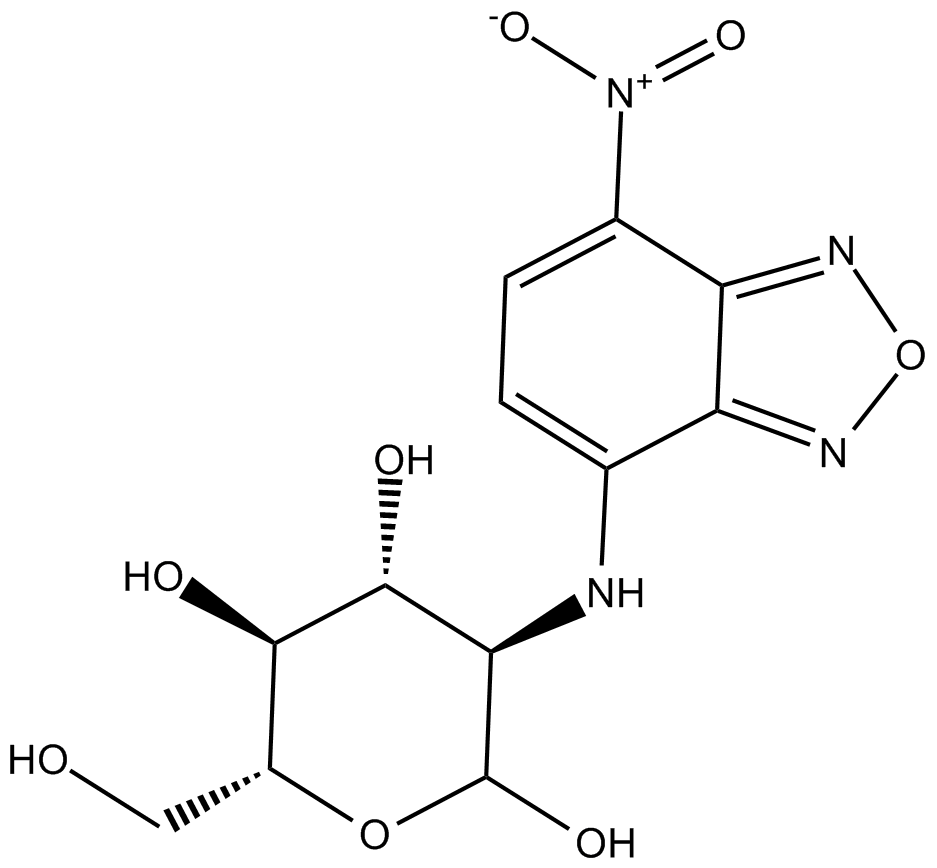
Related Biological Data
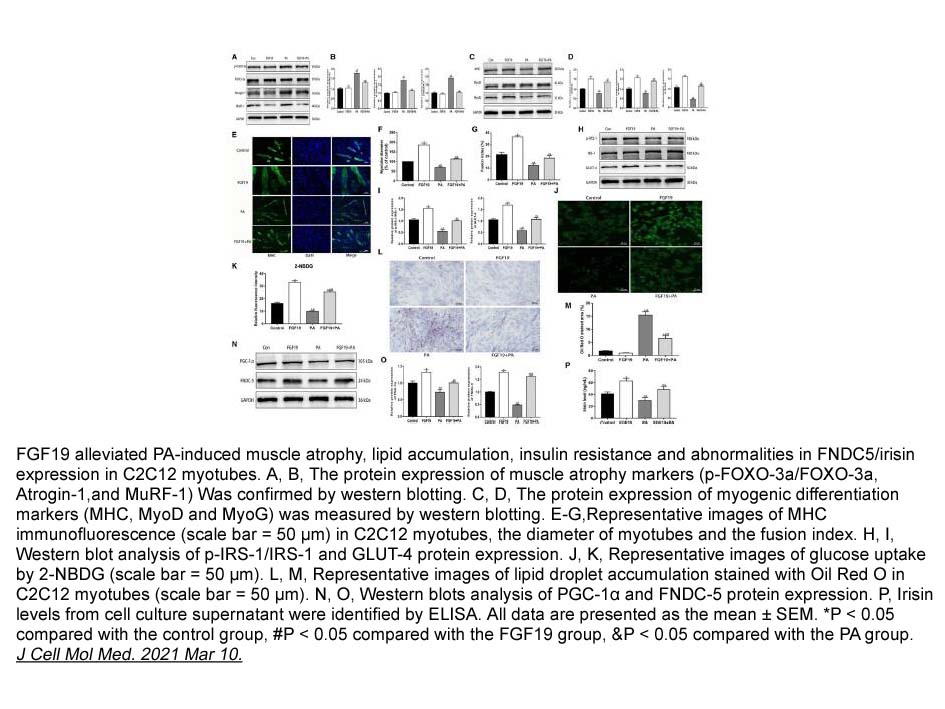
Related Biological Data
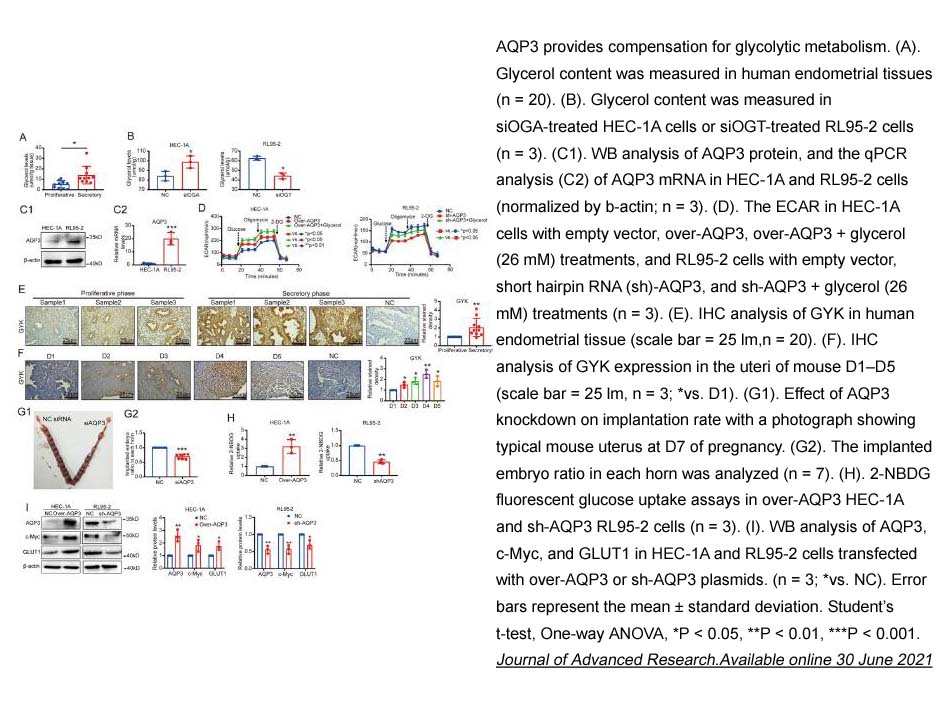
Related Biological Data

Related Biological Data
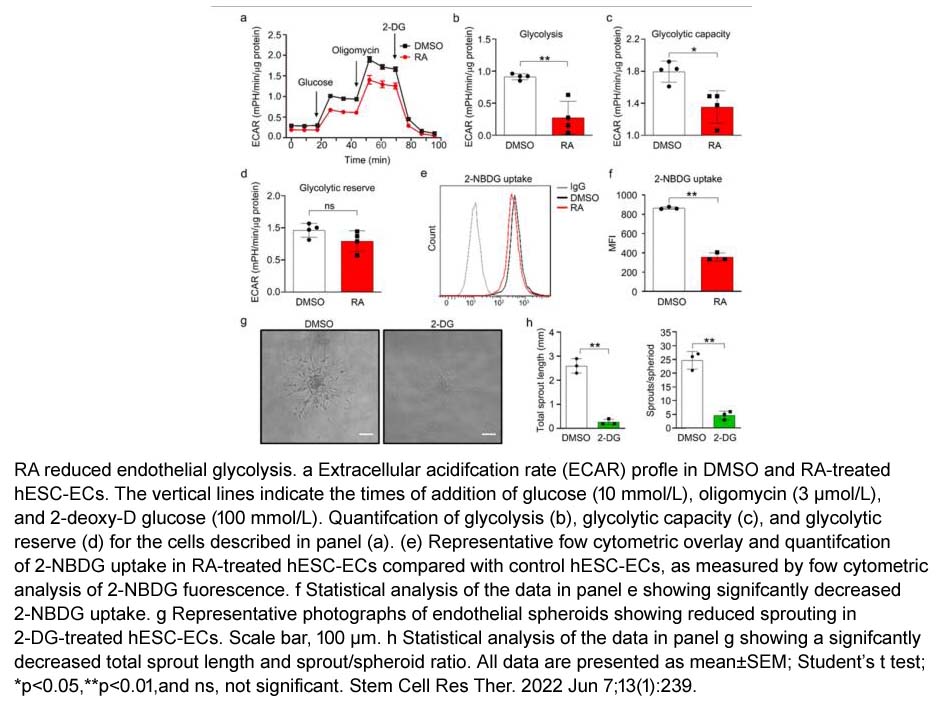
Related Biological Data
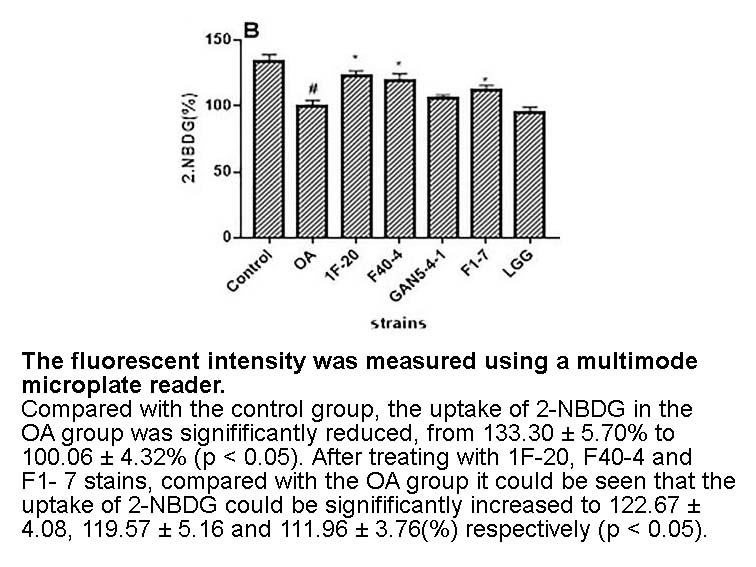
Related Biological Data
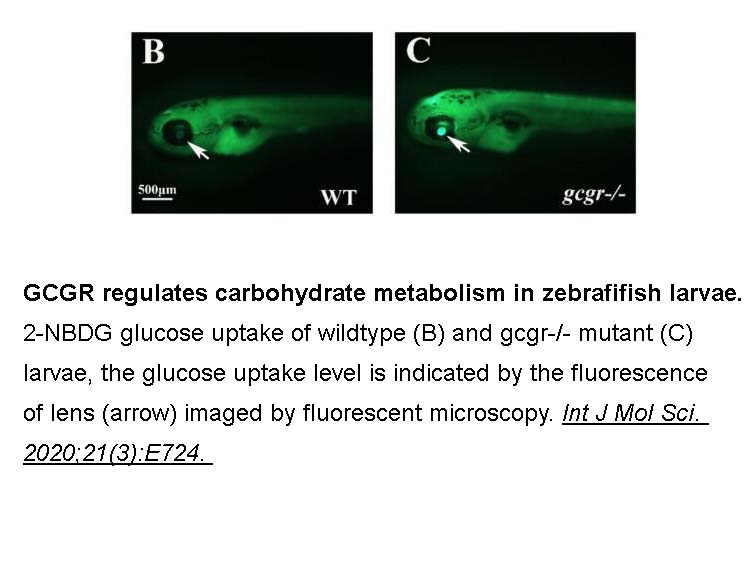
Related Biological Data
